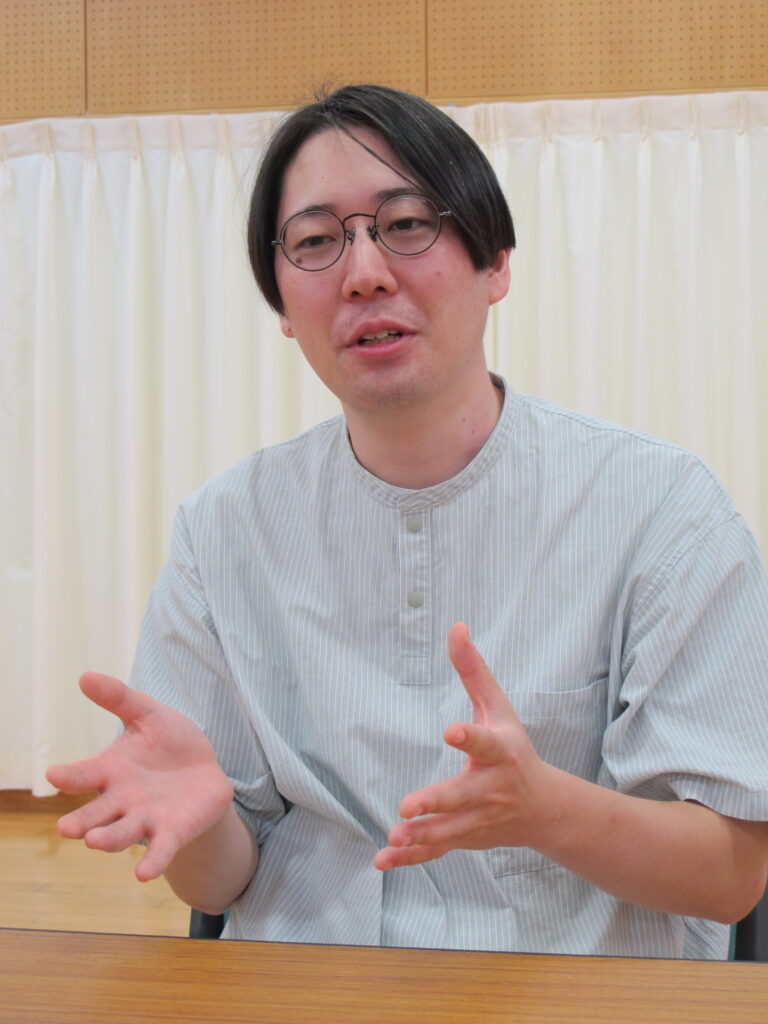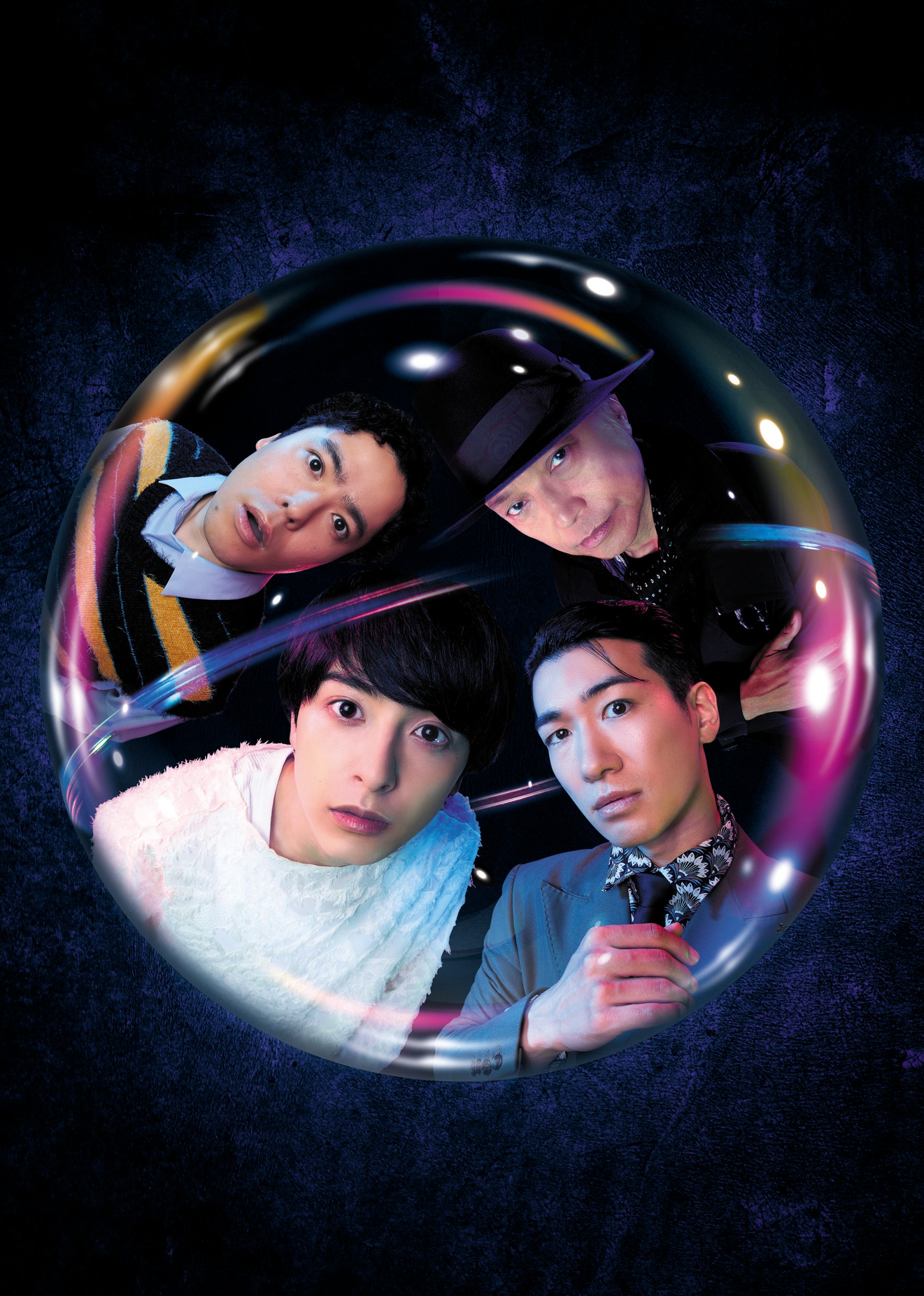
Playwright and director, Ryo Ikeda
With a Master’s degree in sculpture from Tokyo University of the Arts already under his belt, 31-year-old Ryo Ikeda also confirmed his stature as one of the rising stars of contemporary Japanese theatre when he won 2024’s prestigious Kishida Kunio Drama Award with his play “Heartland” that focuses on a group of social outcasts whose turbulent world centers around a rundown rural café where they hang out together.
But besides writing and directing for his own Yūmei theatre company, and making most of the stage sets and video, Ikeda has recently also written scenarios and directed TV animations and dramas for other
companies as well as his own.
Among these, one of his standout works was “Terayama Cabaret” that he dedicated to the late Japanese icon of avant-garde culture, the writer, dramatist and poet Shuji Terayama. With its Japanese cast directed by the leading English dramatist David Leveaux, and starring the first-rate star singer/actor Shingo Katori, the production has been one of this year’s great stage successes.
Now, though, Ikeda’s latest play, “Sphere of Sphere”, which ran recently at the Setagaya-ku public theatre Theatre Tram, features a capsule-toy slot-machine that dispenses artworks in this allegorical
fantasy spanning 2024 and 2059 that delves into issues of human inheritance and evolution through consequences of the machine’s natural selection of capsule-toys. Actually — for those suitably
evolved in the material world — Ikeda also sells original capsule-toys he’s made on the internet at a shop named Toyfukuro (https://yyyry.theshop.jp/).
Meanwhile, spurning that shopping opportunity, Jstages.com instead opted to interview Ryo Ikeda and ask the remarkable creator more about “Sphere of Sphere” and his current aim in theatre.
Q: As a winner of the Kishida Drama Award, you became one of the hottest people in theatre. What did you think when you got the prize?
To be honest, I was not so interested in any awards, so when we were named as finalists I was just pleased if our theatre company became known by lots more people.
As my second baby’s due date was close to the Kishida Award’s selection date, I nearly forgot about that and thought I shouldn’t worry about it too much as the family matter was also very important.
On the other hand, I was so pleased that some of my long-standing favorite playwrights made comments about my play on that occasion. I also had a chance to talk to some judges at the award ceremony party
and I was able to confirm the similarity between those great writers and myself from the point of view of being creators, and that was a fantastic experience for me.
Q: Has anything changed since you won the Kishida Award?
At the beginning of my writing career I posted my stories anonymously on some internet sites, but not ones for theatre. So I thought I could only write in a way that hid my identity… but I also wanted to drop hints about my background.
Anyway, after I won the prize I began wanting to convert those stories and present them on stage more and more. And as I now write my plays under my real name, in my new pieces I want to show things I used to hide inside.
Previously I wrote plays from my actual experiences, but then I scrapped some of those and did fictional creations instead. Now, though, I want to pick up those I dropped and make new creations. Once I thought they were a waste of time for the audiences, but I started to think that they weren’t really if I could use them and work them into my plays effectively. If I can do that, I think I’ll have made progress.
Q: You have had several career choices, including sculpture and being a game-story writer. Why did you choose to be a dramatist?
First of all, I was easily swept away by my surroundings. In fact that’s one reason for continuing my theatre activity. (laugh)
I believe sculpture is done by one person, and I want to do it as my solo activity anytime. But I feel that this alone is not enough for me and I get bored. I am very interested in the group creation of theatre-making, which can be changed by one extra person’s opinion, so that why I am doing theatre work now. Actually, I am doing both, sculpture and theatre, as entirely separate activities.
Q: You once said that you improve each creation through repeated trial and error. What did you try this time?
This time, I wanted to make an allegory. As I said, I have written fiction, and also from my actual experience, and with that I’ve emphasized the allegorical dimension with this “Sphere of Sphere”.
I’ve had lots of time to read children’s picture books since the baby arrived. Many of them have a deep meaning though they are quite simple and brief. So, I was influenced by those picture books and wanted to create a minimalist and deep play and chose capsule-toys as its motif.
These days, all sorts of actual objects get turned into capsule-toys. For example, there are miniatures of smartphone cover-cases because people want to carry such miniature objects with them. Even waste in
the real world, like the bags that wrap loaves of bread, became the contents of capsule-toys and people buy them and carry them. In that sense, I thought capsule-toys have a quite deep and interesting meaning.
Actors of “Sphere of Sphere”

Q: In the play “Sphere of Sphere”, the contents are human genes and/or memory, aren’t they?
In this play, I wrote about cryopreservation of sperm and eggs, and I heard that it is done by freezing them at minus 196 degrees and storing them on a shelf. Though I thought the sperm and eggs were
living parts of humans, in actual fact they have very object-like quality. Coincidentally, I found capsule-toys with prawn eggs inside that people could hatch. I was very surprised that such things — actual lives — were sold as capsule-toys. Which prawn will be chosen in the end? At that time, I had the idea of making a link between the cryopreservation of lives and lives in capsule-toys.
With the development of technology, you can see the predicted face of their baby if wo people get together and have one. I think that’s quite scary, but I think it will be normal in the future. So in this
play I wanted to write about such things.
I wrote this work because I wanted the challenge of depicting the course technology might take in the future. Theatre can create such imaginary things as it is a very primitive artform that can be a good
metaphor of many things.
I sometimes imagine that the understudy in a play who is now played by a human may be played by a hologram in the future. If that happens, real human actors and hologram actors would perform together on stage. When Covid made theatres shut their doors, a new technology called AR Kabuki appeared. Like this example, I wondered how the future of theatre might develop in accordance with the development of
technology. So I wanted to create a play about that kind of future possibility — and I put it into “Sphere of Sphere”.
Q: What is your next target?
One day, I want to create an “enormous” work. It could be physically enormous like the Nebuta Festival in Aomori City (which parades colorful floats of giant human- and animal-shaped lanterns). At the same time, I also want to create “minimal” work. So I want to be a dramatist who can deal with a wide range of works and stages from small to big, and present works for a few to massive numbers in the audience — and for various kinds of audiences including foreigners. That’s because I want to make Japanese theatre a more internationally attractive art like Japanese animation and/or movies.
With all that in mind, I regard it as important to read audiences’ comments and any reviews. I don’t want to ignore their voice if a person says they didn’t understand the play. I try to listen to the voices in order to improve people’s opinions of the next work.
Some might say I should just overlook a few negative comments, but I think if a person said something then they have already become involved in my creation and are part of it. So, I welcome any comments about my next step or target.
Summary of “Sphere of Sphere”
In 2024 a contemporary artist named Koji Motojima (played by Taisuke Niihara) creates a sculpture theming genetic evolution through natural selection. Titled “Sphere of Sphere”, the artwork creates a sensation and he is invited to the dictator-state Ouro, where an unimaginable life awaits him. The play starts with Motojima’s confession in 2059 after he stayed in Ouro for 35 years.

